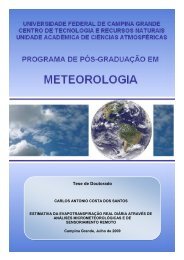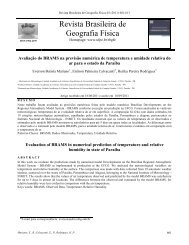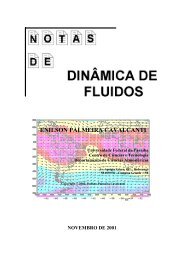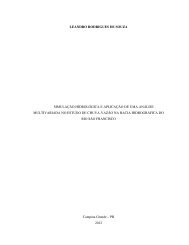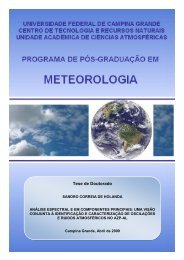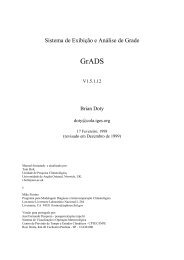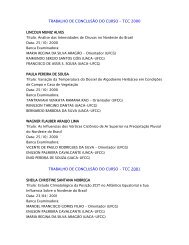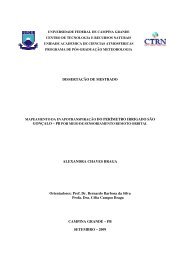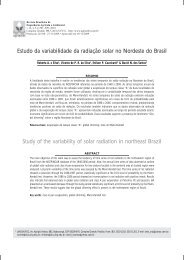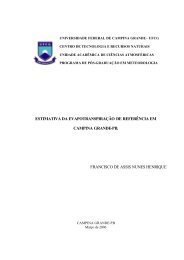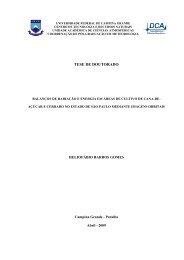Create successful ePaper yourself
Turn your PDF publications into a flip-book with our unique Google optimized e-Paper software.
Appendix 12The <strong>SEBAL</strong> Mountain Model<strong>SEBAL</strong> provides accurate estimations of ET for relatively flat agricultural areas. For use inmountainous areas where there is significant relief and a wide range of slopes and aspects,the <strong>SEBAL</strong> Mountain Model was developed. The <strong>SEBAL</strong> Mountain Model containsmodifications that correct for slope, aspect, and elevation in the computations. The 24-hoursolar radiation is typically much higher on a south slope than on a north slope in theNorthern Hemisphere. The result of not making the corrections for slope, aspect, andelevation is that a higher than actual ET will be computed for north slopes and highelevations because <strong>SEBAL</strong> incorrectly interprets the cooler surface temperatures asindicating “wet” (therefore cool) areas. The cooler surface temperatures on north facingslopes and high elevations is not due to “wetness” however, but is from the temperaturelapse caused by higher elevation and from less incident solar radiation caused by theaspect.Predictions of air flow and wind speed over mountainous areas are much more difficult. Theeffects from the orthographic drainage of air caused by cooling, the acceleration of airstreams passing over mountains due to the venturi effect, and the impacts of drag due toundulating topography all combine to make wind speed prediction difficult and complicated.The following describes the modifications that are made to the <strong>SEBAL</strong> Flat Model in orderfor it to be used in mountainous areas (<strong>SEBAL</strong> Mountain Model):A. Data RequirementsA Digital Elevation Model (DEM) is required to provide elevation data. The units of the DEMshould be in meters with a pixel size the same as that of the satellite data (30m × 30m). Asin the flat model, a layered image must first be created followed by a smaller subset imageif desired (Appendix 4). A DEM subset image must then be created which is the same sizeas the subset image. To do this, one must go to the ERDAS Data Prep-subset image tooland input the DEM from a disk and enter the coordinates of the subset image. The outputwill be the DEM subset image.B. Slope and Aspect ImagesThe Mountain Model requires slope and aspect information for its computations. The slopeand aspect for each pixel are derived using the DEM subset image and the ERDASInterpreter–topographic analysis–slope/aspect tool. The slope and aspect images are thensaved as the output.C. Calculation of the Cosine of the Solar Incidence Angle (cos θ)The solar incidence angle is the angle between the solar beam and a vertical lineperpendicular to the land surface. In the flat model, we assume that the land surface ishorizontal and the calculation of cos θ is very simple and is a constant over the area ofinterest. In the Mountain Model, cos θ is different for each pixel depending on the slope and93



